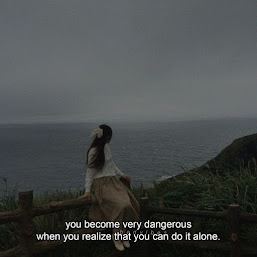Suzume no Tojimari is a story of courage, responsibility, teamwork, sacrifice, love, and, above all, tragedy and recovery. Through their adventure, Suzume and Souta not only fight to save their world but also uncover deeper truths about themselves. The film explores themes of grief and healing in a nuanced and authentic way, depicting the messy and complex process of coming to terms with loss. The characters are rich and multi-dimensional, each bringing a unique perspective to the story.
Visually, the film captures the serene beauty of the Japanese countryside, with sweeping shots of lush forests and tranquil streams. The attention to detail is remarkable, with every frame feeling carefully composed and thoughtfully executed. Suzume no Tojimari is ultimately a story of resilience and hope, as Suzume learns to embrace her past and find joy in the present. The cinematography is truly stunning, elevating the film into a visual masterpiece.
Even though Shinkai intended this film to resonate with everyone, some knowledge of Japanese mythology—particularly regarding Daijin and Sadaijin—can enhance the viewer's experience. Shinkai is known for weaving elements of Japanese myths into his works, and Suzume no Tojimari is no exception. However, incorporating these myths can make certain parts of the film confusing. In this blog, alongside my review, I’ll share some assumptions and interpretations that might help clarify the story (with a few spoilers). I’m grateful for the opportunity to learn more about these fascinating myths through this film and to deepen my understanding by writing this review.
Myths
1. Who is Daijin?
Another origin of Daijin is Okami, a term used to show respect for a deity. When the two cats, Daijin and Sadaijin, reveal their true forms, their colours shift: Daijin, originally white, becomes a giant white cat on a black base, while Sadaijin undergoes the opposite transformation. This visual contrast suggests a yin-yang relationship between Udaijin and Sadaijin. The essence of the yin-yang concept is that both forces work in tandem to maintain natural harmony. This balance is reflected in the film. For instance, after Daijin’s visit, Chika's guest house suddenly becomes busy, and Rumi's snack bar thrives with an influx of customers. Conversely, Sadaijin possesses Tamaki, amplifying her underlying negative emotions and leading her to express harsh feelings toward Suzume. In a later scene, Tamaki doesn’t deny what she said but instead acknowledges that she expressed terrible things.
2. Why did Daijin turn Souta into a keystone?
When Suzume removes the keystone, Daijin reverts to his cat form, appearing weak and frail. This might suggest that Daijin's diminished state is due to a lack of worship and appreciation over time. However, as Suzume begins to show affection towards Daijin—who embodies a capricious child deity—he becomes devoted to her, establishing a kind of cooperative relationship. This newfound bond could explain why Daijin no longer wishes to serve as the keystone after holding that role for over a hundred years. When Souta attempts to turn Daijin back into the keystone to seal the worm, Daijin resists and instead forces Souta to take over his role as the keystone.
3. Why did places of keystone change?
As Souta explains, "As people's perceptions change, so does the shape of the land." Over time, the flow of people shifts, and the weight of their hearts secures the land. In areas where fewer people reside, the weight of their hearts fades, and the door begins to open. This implies that as people's focus and emotions shift, so do the places that require protection. Consequently, the locations that need keystones change with the flow of people's hearts over time.
4. What is the moral of this film?
Japan, like the rest of the world, has faced many natural disasters, causing people to lose their loved ones. In the past, people found comfort in worshipping deities as a way to honour those they lost. Over time, these traditions faded, and with them, the practice of confronting trauma. Suzume no Tojimari doesn’t suggest returning to these rituals but rather encourages us to face our traumas directly and find solace within ourselves. While revisiting painful memories of past disasters can be difficult, the story emphasizes that by confronting and accepting them, we can find peace and move forward into the future.









.jpg)


